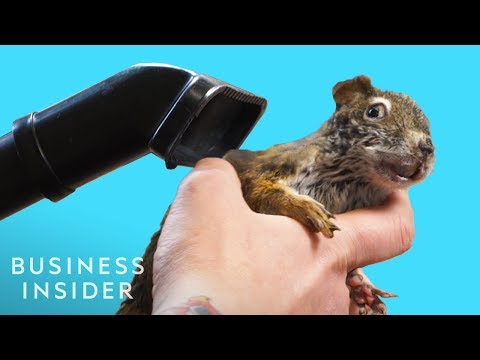Taxidermist Career: Job Description and Salary
Taxidermist Job Description and Salary:
A taxidermist is a skilled professional who preserves and mounts animal specimens for display or study purposes. Their main responsibility is to carefully skin, clean, and stuff the bodies of animals, ensuring that their natural appearance is maintained. Taxidermist job description also includes the preparation of anatomical structures, such as eyes and teeth, to create a lifelike representation of the animal.
In addition to the technical skills required for this profession, taxidermists must possess a strong understanding of animal anatomy, as well as artistic abilities to accurately recreate the animal’s natural pose and expression. They may also be involved in designing and constructing natural habitat dioramas for museum exhibits.
When it comes to taxidermist salary, the earnings can vary depending on factors such as experience, location, and the demand for taxidermy services. On average, taxidermists can expect to earn between $30,000 and $50,000 per year. However, those with extensive experience and a strong reputation in the field may earn significantly higher incomes.
Overall, a career as a taxidermist offers individuals with a passion for animals and art the opportunity to create stunning and educational displays. While the job may require long hours and meticulous attention to detail, the satisfaction of preserving and showcasing the beauty of wildlife can be immensely rewarding.

Taxidermist Job Description Template
A taxidermist is a professional who specializes in the preservation and mounting of animal specimens for display or study purposes. Their main responsibility is to carefully skin, clean, and preserve the animal’s hide, feathers, or fur, and then meticulously recreate the animal’s body structure using various materials such as wires, foam, or clay. They may also use tanning techniques to treat the animal’s skin and prevent decay.
Precision is a crucial aspect of a taxidermist’s job as they need to accurately replicate the animal’s natural form and posture. Attention to detail is essential to ensure that the animal looks lifelike and maintains its natural appearance. Taxidermists must possess artistic skills to recreate the animal’s features, such as eyes, nose, and mouth, using glass or synthetic materials.
Another important skill for a taxidermist is patience. The process of taxidermy can be time-consuming and requires meticulousness. Taxidermists often have to wait for the animal’s skin or fur to dry properly before proceeding with the preservation and mounting process. Patience is also necessary when dealing with delicate or fragile specimens, as any mistakes during the preservation process can damage or ruin the specimen.
In addition to their technical skills, taxidermists must have a good knowledge of anatomy and animal behavior to accurately recreate the animal’s posture and expression. They also need to stay updated on the latest techniques and materials used in taxidermy.
Overall, a taxidermist’s job requires a unique combination of artistic talent, scientific knowledge, and meticulousness. They play a crucial role in preserving and showcasing the beauty of animals for educational, research, or aesthetic purposes.
Taxidermist Responsibilities
Taxidermist Requirements
How Much Does A Taxidermist Make?
Taxidermist Salary
| Job Title | Median Salary | Salary Range |
|---|---|---|
| Taxidermist | $39,000 | $30,000 – $50,000 |
A taxidermist is a professional who preserves and mounts animal specimens for display or study purposes. They carefully prepare the animal’s skin, clean the bones, and create lifelike poses. The median salary for taxidermists is $39,000 per year, with a salary range between $30,000 and $50,000. Taxidermy requires a combination of artistic skill, scientific knowledge, and attention to detail. Taxidermists may work independently or for museums, wildlife agencies, or private collectors. The demand for taxidermy services can vary, and additional income may be earned through custom orders or special projects.
Taxidermist Salaries by Country
Top Paying Countries for Taxidermist
| Country | Average Salary (USD) |
|---|---|
| United States | $40,000 |
| Canada | $34,000 |
| Australia | $32,000 |
| New Zealand | $30,000 |
| Germany | $28,000 |
In the field of taxidermy, the salaries of professionals can vary significantly depending on the country they work in. According to available data, the top paying countries for taxidermists are the United States, Canada, Australia, New Zealand, and Germany. In the United States, taxidermists earn an average salary of $40,000 per year, making it the highest paying country for this profession. Canada follows with an average salary of $34,000, while Australia and New Zealand offer average salaries of $32,000 and $30,000 respectively. Germany completes the list with an average salary of $28,000. It’s important to note that these figures are approximate and can vary based on factors such as experience, location, and demand for taxidermy services in each country.
A video on the topic Taxidermist
Video Source : Insider Business
Interview Questions for Taxidermist
1. How did you become interested in taxidermy?
I have always been fascinated by wildlife and nature. As a child, I would spend hours observing animals and their behavior. This interest eventually led me to explore the art of taxidermy as a way to preserve and honor the beauty of these creatures.
2. What kind of training or education did you undergo to become a taxidermist?
After completing high school, I pursued a degree in biology to gain a deeper understanding of animal anatomy and physiology. Additionally, I attended specialized taxidermy workshops and courses to learn the techniques and skills required for the art of taxidermy.
3. Can you explain the process of taxidermy in simple terms?
Taxidermy involves preserving the skin of an animal and mounting it on an artificial body to create a lifelike representation. The process includes skinning the animal, preserving the hide, sculpting a mannequin, positioning the hide on the mannequin, and finally, adding details such as eyes and teeth.
4. What are the biggest challenges you face as a taxidermist?
One of the biggest challenges is ensuring that the final mount accurately represents the animal’s natural appearance. Achieving realistic poses and expressions can be quite difficult, especially when working with larger animals. Additionally, preserving the hide properly and preventing decay can be challenging in certain climates.
5. How do you source the animals that you work on?
I strictly follow ethical guidelines and regulations when sourcing animals for taxidermy. The majority of the animals I work on are roadkill or animals that have died of natural causes. I also collaborate with local wildlife rehabilitation centers and zoos, where I am sometimes provided with specimens that are beyond saving.
6. What is the most memorable project you have worked on as a taxidermist?
One of the most memorable projects I worked on was preserving a rare bird species that had become extinct in the wild. The opportunity to contribute to the preservation of a species and educate others about its existence was truly rewarding.
7. How do you ensure the long-term preservation of a taxidermy piece?
To ensure the long-term preservation of a taxidermy piece, I use high-quality preservation techniques and materials. This includes proper tanning of the hide, using durable artificial bodies, and applying protective coatings. Regular maintenance and monitoring of the piece are also essential to detect any signs of deterioration early on.
8. Do you have any tips for individuals interested in learning taxidermy?
My advice would be to start by learning the basics of anatomy and studying the behavior of different animal species. Attending taxidermy workshops and courses can provide hands-on experience and guidance. Additionally, practice and patience are key to mastering this intricate art form.
9. How do you handle ethical concerns about the practice of taxidermy?
Ethical concerns about taxidermy are valid, and it’s important to address them. As a taxidermist, I prioritize ethical sourcing of specimens and adhere to legal guidelines. I believe in using taxidermy as a means to promote education, conservation, and appreciation for the beauty of animals.
10. What do you find most rewarding about being a taxidermist?
The most rewarding aspect of being a taxidermist is the opportunity to preserve the beauty of animals and create lifelike representations that can educate and inspire people. It’s immensely satisfying to see the reactions of individuals who appreciate and connect with the art of taxidermy.






